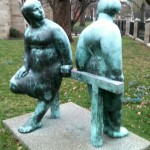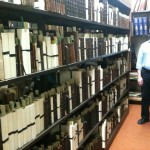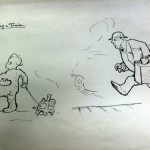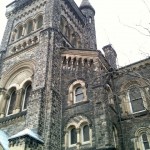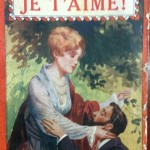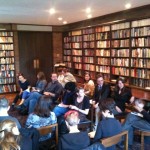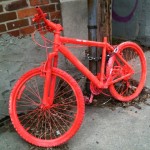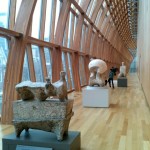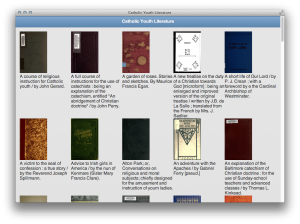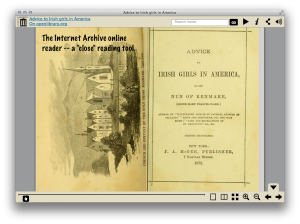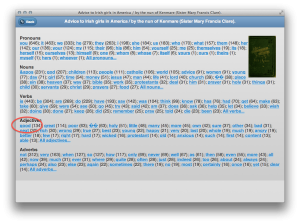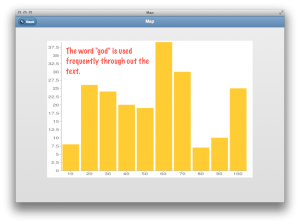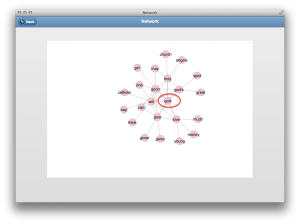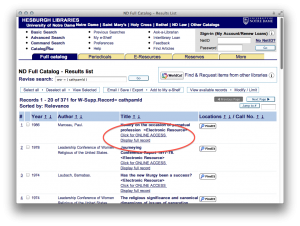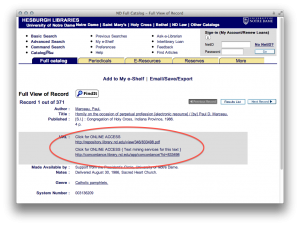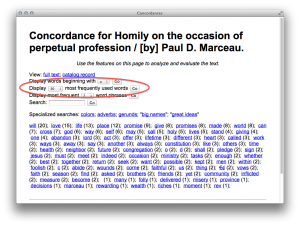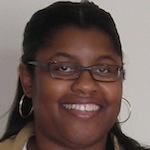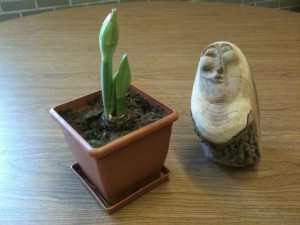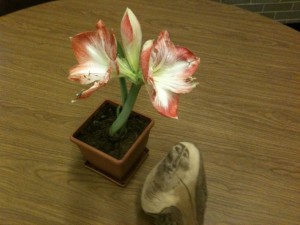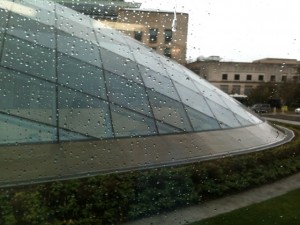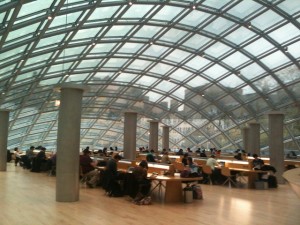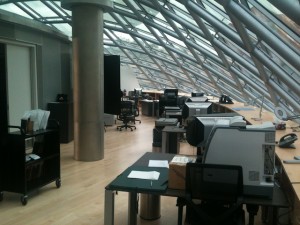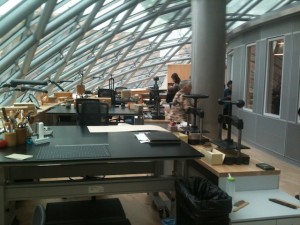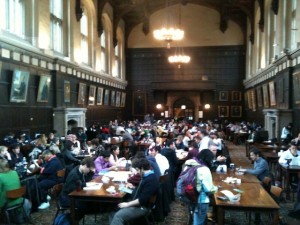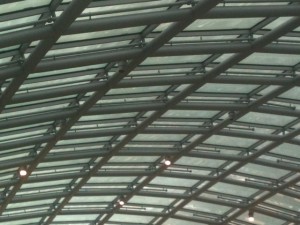Patron-Driven Acquisitions: A Symposium
Posted on July 18, 2012 in UncategorizedYou might say this is a reverse travelogue because it documents what I learned at a symposium that took place here at the University of Notre Dame (May 21, 2012) on the topic of patron-driven acquisitions (PDA). In a sentence, I learned that an acquisitions process partially driven by direct requests from library readers is not new, and it is a pragmatic way to supplement the building of library collections.
Suzanne Ward, Robert Freeman, and Judith Nixon (Purdue University) began the symposium with a presentation called “Silent Partners In Collection Development: Patron-Driven Acquisitions at Purdue“. The folks at Purdue have been doing PDA for about a decade, but they advocate that libraries have been doing PDA for longer than that when you consider patron suggestion forms, books-on-demand services, etc. Their PDA program began in interlibrary-loan. When requested materials fit a particular criteria (in English, scholarly, non-fiction, cost between $50-150, ship in less than a week, and were published in the last five years), it was decided to purchase the material instead of try to borrow it. The project continued for a number of years, and after gathering sufficient data, they asked themselves a number of questions in order to summarize their experience. Who were the people who were driving the process? Sixty percent (60%) of the requests fitting the criteria were from graduate students — the “silent partners”. How much did it cost? Through the process they added about 10,000 books to the collection at a cost of about $350,000. Were these books useful? These same books seemed to circulate four times when the books purchased through other means circulated about two and half times. What were the subjects of the books being purchased? This was one of the more interesting questions because the subjects turned out to be cross-disciplinary and requestors were asking to borrow materials that generally fell outside the call number range of their particular discipline. Consequently, the PDA functions were fulfilling collection development functions in ways traditional approval profiles could not. E-book purchases are the next wave of PDA, and they have begun exploring these options, but not enough data has yet to be gathered in order for any conclusions to have been made.
Lynn Wiley (University of Illinois at Urbana-Champaign) was second and presented “Patron Driven Acquisitions: One Piece On A Continuum Of Evolving Services”. Starting in early 2010 UIUC and in conjunction with the state-wide consortium named CARLI began the first of four pilot projects exploring the feasibility of PDA. In it they loaded 16,000 MARC records into their catalog. These records represented items from their Yankee Book Peddler approval plan. Each record included a note stating that the book can be acquired upon request. The implementation was popular because they ran out of money in five weeks when they expected the money to last a lot longer. In a similar project about 6,000 ebook titles where added to the library catalog, and after 10 “activities” (uses) were done against one of the items the ebook was purchased. After about four months about 240 titles were purchased but as many as 450 examined but not triggered. Each ebook cost about $100. A third pilot expanded on the second. It included core approval items from bibliographers — about 150 items every two weeks. Requested items got a two-day turn-around time at an average cost of $60/book. Finally, a forth project is currently underway at it expands the user population to the whole of CARLI. Some of the more interesting conclusions from Wiley’s presentation include: 1) build it and they will come, 2) innovation comes out of risk taking, 3) PDA supplements collection building, 4) change circulation periods for high access books, and 5) PDA is a way to build partnerships with vendors, other librarians, and consortia.
“The Long Tail of PDA” was given by Dracine Hodges (The Ohio State University) and third in the line up. At Ohio State approximately 16,000 records representing on-demand titles were loaded into their catalog. No items were older than 2007, in a foreign language, computer manuals, or cost more than $300. They allowed patrons to select materials have have them purchased automatically. The university library allocated approximately $35,000 to the project, and it had to be cut short after a month because of the project’s popularity. Based on Hodges’s experience a number of things were learned. PDA benefits the researcher in cross-disciplines because titles get missed when they are in one or the other discipline. Second, comparing and contrasting print-based titles and ebooks is like comparing apples and oranges. The issues with print-based titles surround audience and things like courtesy cards. Whereas the issues surrounding ebooks include things like views, printing, downloads, and copying. In the future she believes she can see publishers selling things more directly to the patron as opposed to going through a library. She noted the difficulty of integrating the MARC records into the catalog. “They are free for a reason.” Hodges summarized her presentation this way, “We are doing a graduate shift from just-in-case selection to just-in-time selection, and the just-in-time selection process is a combination of activities… Print is not dead yet.”
The final presentation was by Natasha Lyandres and Laura Sill (University of Notre Dame), and it was called “Why PDA… Why Now?” In order to understand the necessary workflows, the Hesburgh Libraries experimented with patron-driven acquisitions. Fifty thousand ($50,000) was allocated and a total of 6,333 records from one ebook vendor were loaded into the Aleph catalog. The URLs in the catalog pointed to activated titles available on the vendor’s platform. Platform advantages and disadvantages became quickly apparent as patron began to make use of titles. Their questions prompted the library to draw up an FAQ page to explain features and advise patrons. Other platform issues to be further investigated are restrictions because of digital rights management, easier downloads, and printing quality. To monitor the speed of spend and to analyze the mix of content being collected, usage reports were reviewed weekly. While the work with PDA at Notre Dame is still in its infancy, and number of things have been learned. PDA is a useful way of acquiring ebooks. Print materials can be acquired in similar ways. The differences between vendor platforms should be explored some more. Ongoing funding for PDA and its place and structure in the materials budget will require further discussion and thought. Integrating PDA into formal collection development practices should be considered.
“Thank you”
The symposium was attended by as many as seventy-five people from across the three or four states. These folks helped turn the event into a real discussion. The symposium was sponsored by the Professional Development Committee (PDC) of the Hesburgh Libraries (University of Notre Dame). I want to thank Collette Mak and Jenn Matthews — PDC co-members — for their generous support in both time and energy. Thanks also go to our speakers with whom none of this would have been possible. “Thank you to one and all.”







